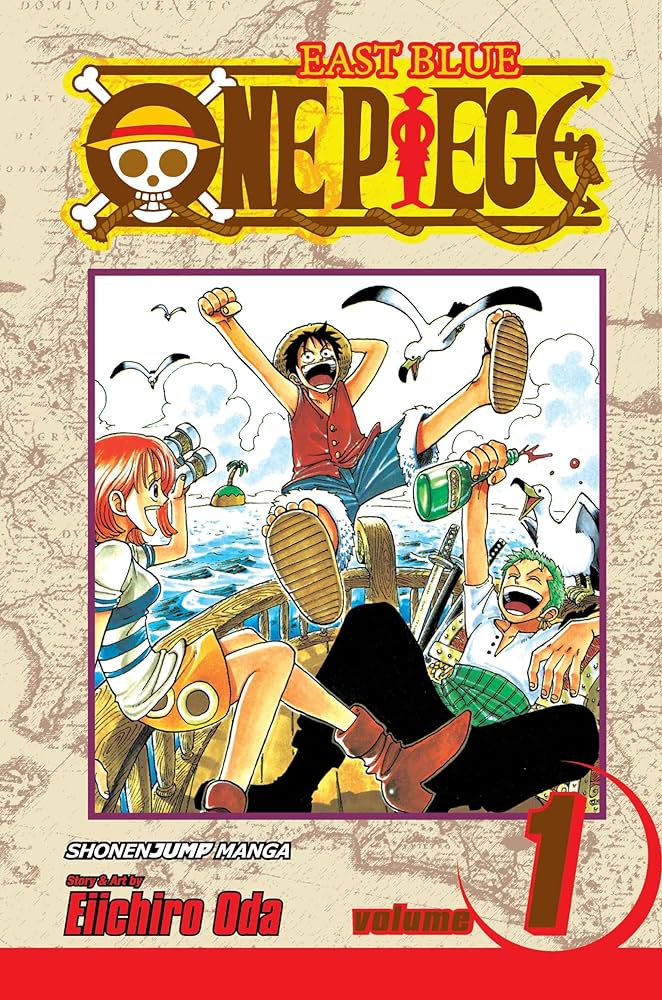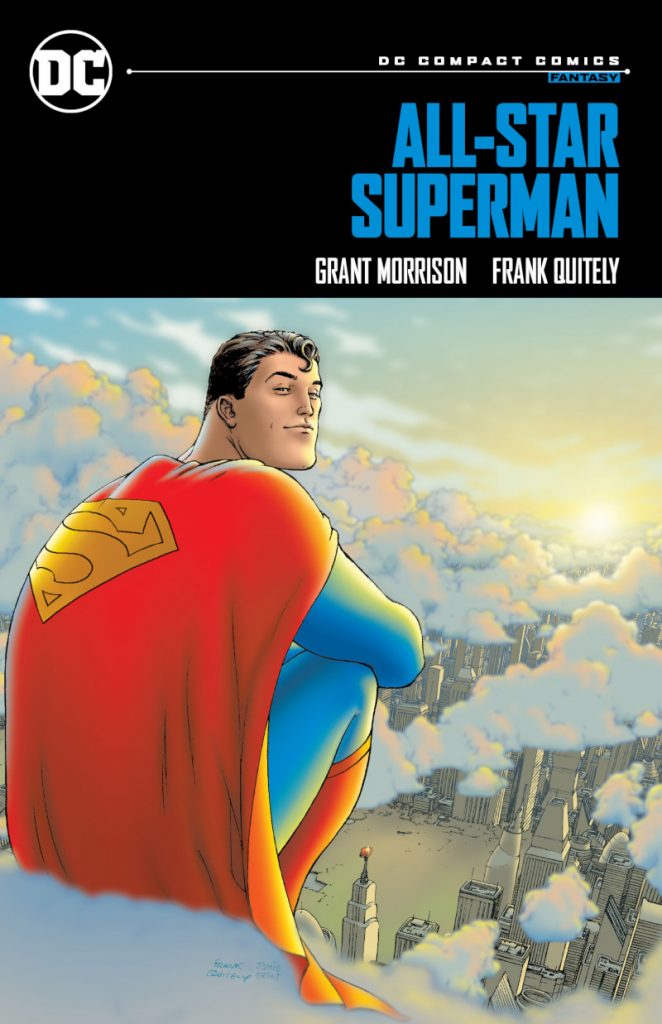Series Lengths, Managing Pull Lists, and More Format Thoughts: It’s the July 2024 Mailbag!
Greetings from space, where I’m sitting on an airplane wrapping up this month’s Mailbag Q&A. There’s a lot to get to and this flight isn’t infinitely long, despite how it feels, so let’s get straight into it. Thanks to everyone for the questions, as per usual, though. You all rocked, once again!

How much does the length of a series impact your decision to start reading it or not? How much catch-up are you willing to do to get into a currently ongoing book? – Tjas Debeljak
It can, and can to a significant degree. It’s mostly a limitation. For example, there’s nothing you can do to convince me to read One Piece. It’s not that I don’t think it’d be fun or good or anything like that. It’s just 109 volumes deep. I can’t do that to myself. That can happen, and it’s with a lot more things than One Piece. I could never be Douglas Wolk or Dave Buesing. I am never going to read every Marvel comic ever published. It just isn’t going to happen. I don’t have that completist brain.
But if there’s something that I really want to read — I mean really, really want to read — then I’m going to read it regardless of length. Take Naoki Urasawa’s 20th Century Boys as an example. I knew it was 24 volumes, but I couldn’t resist it. It had to be read. I have no problem rereading the entirety of Jonathan Hickman’s time on Fantastic Four all the way to Secret Wars. Giant tomes might be imposing to some but if the interest is there I’ll get on it. As much as length can and does limit what I read, it’s less of a defining factor than personal interest.
So, if we’re talking a currently ongoing book, like, say, Mark Waid and Dan Mora’s work together at DC the past few years? I’d have no problem diving into that, and I still plan to at some point. I’ve done that many times before, although my catch up typically comes in the form of reading trades or binge reading on a Marvel Unlimited or DC Universe Infinite rather than buying single issues.
The bloated pull list strikes again! As it so often does throughout a comic reader’s journey, my pull has gotten a tad unwieldy. On top of that, I’m running low on space for trades/GNs/etc. My question is how do you decide what to read where? How does one series make the cut for single issues vs trade-waiting? Or print vs digital? I love print and the experience of buying and reading monthly comics but the matters of real estate and re-readabilty are becoming too big to ignore. – Casey Watson
Print versus digital is easy. I almost never read in digital. I reread digitally, particularly for Marvel and DC Comics that are in their all-you-can-eat apps. But the only time I read comics digitally, for the most part, are when someone sends me a PDF for a podcast. So, that part is simple.
As for single issues versus trade-waiting, that connects to my previous answer about the length of certain series and how much that can restrict my reads. If I want to read something, and urgently so, I’ll read it in single issues. There’s one caveat to that answer, though. If it’s a limited series, I am far more likely to wait for trade or read it in one of those all-you-can-eat apps. That’s the weird/predictable thing about the limited series trend. It’s dramatically reduced the number of titles I read in single issue form.
Basically, I let interest guide me. But I will say, the real estate question is real. I find myself waiting for trades a bit more often than I used to simply because I’m running out of room, and I will grab comics at libraries or elsewhere just to make sure my space isn’t encumbered any further. Libraries are a super underrated resource for comic readers. Between Hoopla (the digital service which I do use) and the actual physical library, they save me a lot of space and money. The only problem is reading something digitally often leads to me buying something in print.
If I can give you one suggestion, it’s to do what I do every year or two: host a garage sale for the comics/trades you’re ready to move on from. While you won’t make your money back, you’ll make a bit, and more importantly you’ll reclaim your space. My most recent one resulted in nearly five long boxes of room being cleared. It was great, and necessary! But yes, this is a major issue, and a curse of the comic fan. Or really fans of any physical media. The physical experience is superior, but it eats up space. That can be hard to balance, as we both know all too well.

Really enjoyed your format post this week. I’m glad that DC’s Compact Comics line is proving to be a hit. I know the familiarity to manga has been cited as a reason why, but one thing that’s really struck me so far about the line is that it’s focused on a lot of self-contained stories. I understand the appeal of that, but it also seems like one of the things that’s made manga so successful is having long-running series to hook people. “Oh you liked this volume? Good news, here’s 10 more at $11.99 a pop…” I don’t think DC should abandon the self-contained aspect entirely, but do you think they should try doing some more serialized releases in the Compact Comics format to see how that impacts sales? – Ross Binder
For sure! Identifying what those are is the challenge, of course. It’s a lot easier for manga because the titles in that world are all one story by one creator or creative team. There aren’t multiple One Piece volume ones (besides different editions, of course) or multiple Pluto volume ones. You just hop in, buy the first, and continue until you’re done. But with serialized releases, the question becomes “Where do you start and where do you finish?” For Scott Snyder and Greg Capullo’s Batman run, for example, do you just start at the beginning and go to the end? If that’s the case, how do you brand it, and what do you do with James Tynion IV’s issues in that volume? Or for Uncanny X-Men, do you start with the X-Men #94? #1? Jim Lee? That’s tricky! It’s far less straightforward.
I do think there should be more serialized releases — and we are already seeing a bit of that, as American Vampire Vol. 1 was part of wave one which suggests there could be more to come with that series (just like Urban Comics did with other Vertigo titles) — but you have to be smart about it. A good example would be Marvel doing digests for Unbeatable Squirrel Girl, and with that, you’d just collect Vol. 1 #1 through #8, then move onto the next volume as your second release, and keep going until you’re done. That series could work really well in that format. But the longer running books are tough to serialize like this. It’s part of the reason DC and Marvel trades have been a struggle to sell in the relaunch era. It’s tricky to follow, so you have to be selective in what you publish and what you don’t.
That said, most of the DC Compact Comics being complete stories is a real advantage in my mind. It’s a lot easier to get someone to buy one book then ten. Committing to a bunch of volumes can be imposing for people. As they say with my favorite acronym KISS: Keep it Simple, Stupid. That should be the guiding light with efforts like this.
subscribers only.
Learn more about what you get with a subscription
